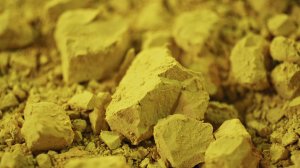Paladin remains optimistic about uranium market potential
JOHANNESBURG (miningweekly.com) – ASX-listed uranium miner Paladin Energy’s two mines in Namibia and Malawi remain under care and maintenance to preserve resource and shareholder value in the current low uranium price environment; however, the company is positive that uranium demand will pick up in the near future.
The company plans to restart production at the Langer Heinrich mine, in Namibia, within the next two years, and is selling the Kayelekera mine, in Malawi.
Spot prices for uranium have declined since 2007 from about $140/lb of uranium oxide to about $30/lb this year, which led to mined supply being rapidly cut back over the years.
Paladin says the nuclear power industry is consuming more uranium than before the 2011 Fukushima Daiichi incident, with growth predominantly in China and India. Utilities have been “under buying” at a rate of 80-million pounds a year relative to consumption, the miner points out.
It adds that European and US utilities are running down stockpiles and contract positions put in place before the Fukushima level-seven nuclear disaster.
Since the Fukushima accident, Paladin says uranium exploration spend has decreased significantly, by about 90%, with active exploration on 670 projects in 2011 compared with 90 projects now.
More than 40-million pounds of uranium has also been taken out of the supply side in recent years.
This while permitting uncertainty remains in many jurisdictions across the world, while projects require higher incentive prices upwards of $60/lb of uranium oxide. Paladin adds that production from new mines is only likely to start years after incentive prices are reached.
Paladin says it will benefit when long-term contracting returns, since the rate of development of new mines cannot match the growth case and are unable to respond in time to price increases.
The company notes that there is potential for short-term price hikes in the uranium market, and adds that mines currently on care and maintenance have a significant restart timeline advantage, compared with yet to be developed mines.
Additionally, Paladin points out that production of uranium by Kazakhstan – as the largest uranium producing country in the world – has remained flat at about 60-million pounds a year, which should continue to 2021.
Explaining where demand for uranium will come from, Paladin says nuclear energy is a low-cost and low-emission baseload energy source, in a world focused on mitigating carbon emissions and global warming.
The company highlights that China plans to have 56 nuclear reactors operating by 2020 and 180 reactors by 2030 to reduce its reliance on coal-fired power.
India will follow suit, with 21 reactors planned for operation by 2031, while Saudi Arabia has announced it will operate 17 new reactors by then.
With the electric vehicle market expected to expand from two-million vehicles worldwide in 2018 to an anticipated ten-million in 2025 and 28-million in 2030, nuclear energy is a clean, realisable energy source to power electric vehicle charging stations.
Paladin explains that renewable energy by itself is not the answer, since it is often highly variable, and needs to be offset with gas, coal or uranium.
OPERATIONAL UPDATE
The company confirmed that a prefeasibility study is in progress for the Langer Heinrich mine, in Namibia, where Paladin is considering rapid restart plans and upgrades to the mine.
Paladin has so far determined an initial restart capital cost requirement of about $78-million, excluding care and maintenance costs. This mine has the potential to be production-ready from early to mid 2021, it notes.
Meanwhile, Paladin says its Paladin Africa subsidiary will be sold to Lotus Resources. The subsidiary holds an 85% interest in the Kayelekera uranium mine, in Malawi.
The A$5-million consideration that Paladin will receive will improve the company’s forward cash position.
Comments
Press Office
Announcements
What's On
Subscribe to improve your user experience...
Option 1 (equivalent of R125 a month):
Receive a weekly copy of Creamer Media's Engineering News & Mining Weekly magazine
(print copy for those in South Africa and e-magazine for those outside of South Africa)
Receive daily email newsletters
Access to full search results
Access archive of magazine back copies
Access to Projects in Progress
Access to ONE Research Report of your choice in PDF format
Option 2 (equivalent of R375 a month):
All benefits from Option 1
PLUS
Access to Creamer Media's Research Channel Africa for ALL Research Reports, in PDF format, on various industrial and mining sectors
including Electricity; Water; Energy Transition; Hydrogen; Roads, Rail and Ports; Coal; Gold; Platinum; Battery Metals; etc.
Already a subscriber?
Forgotten your password?
Receive weekly copy of Creamer Media's Engineering News & Mining Weekly magazine (print copy for those in South Africa and e-magazine for those outside of South Africa)
➕
Recieve daily email newsletters
➕
Access to full search results
➕
Access archive of magazine back copies
➕
Access to Projects in Progress
➕
Access to ONE Research Report of your choice in PDF format
RESEARCH CHANNEL AFRICA
R4500 (equivalent of R375 a month)
SUBSCRIBEAll benefits from Option 1
➕
Access to Creamer Media's Research Channel Africa for ALL Research Reports on various industrial and mining sectors, in PDF format, including on:
Electricity
➕
Water
➕
Energy Transition
➕
Hydrogen
➕
Roads, Rail and Ports
➕
Coal
➕
Gold
➕
Platinum
➕
Battery Metals
➕
etc.
Receive all benefits from Option 1 or Option 2 delivered to numerous people at your company
➕
Multiple User names and Passwords for simultaneous log-ins
➕
Intranet integration access to all in your organisation





















